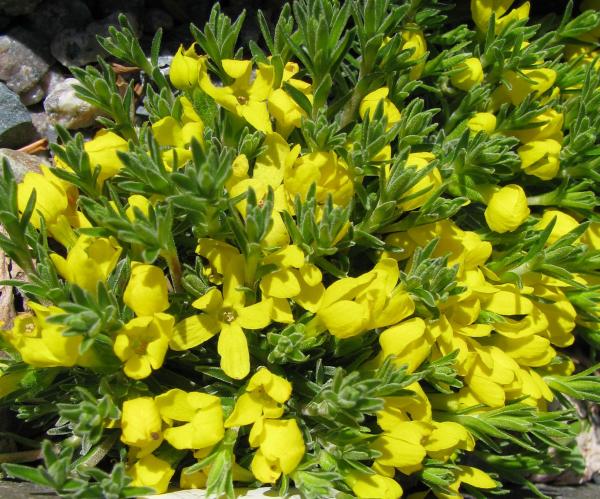Vitaliana primuliflora
Description and general information
Vitaliana primuliflora is a member of the Primrose family and is closely allied to Androsace and Douglasia. The genus is named in honour of Donati Vitaliano (1717-1762), who was a professor of botany at Turin, Italy. The species is native to alpine regions of southern and west-central Europe.
This species has a tufted habit, making it ideal for troughs, crevice gardens and the rockery in general. In spring plants produce nearly stemless 5-petalled yellow flowers.
Cultivation
In the north, Vitaliana seems to thrive best in full sun but further south, shade from mid-day sun may be suggested. In the wild, they often grow on open, north-facing slopes. Soil should be on the alkaline side, well-drained yet not prone to drought.
Bloom period
In the Pyrenees I have seen this species blooming in early May. In milder regions it will bloom in April while in cooler regions it may not bloom until June.
Propagation
Cuttings, seed and division
Seed
These are the directions suggested on the Ontario Rock Garden Society website. Sow at 20C for 6 weeks, then place at 4C for 6 weeks, then slowly raise temperature to 10C for 6 weeks. If there is no germination, repeat the cycle.
Division
I've had mixed results with dividing; essentially they fall apart into seperate stems when divided. Bits with roots can be planted a little deeper and may root along the buried stem similar to taking cuttings. Unrooted bits can be used for stem tip cuttings.
Cuttings
Probably the easiest way to propagate Vitaliana is by cuttings. Plants root quite easily from stem tips taken just after flowering. I have rooted them in a mix of peat/sand in a shaded frame.

